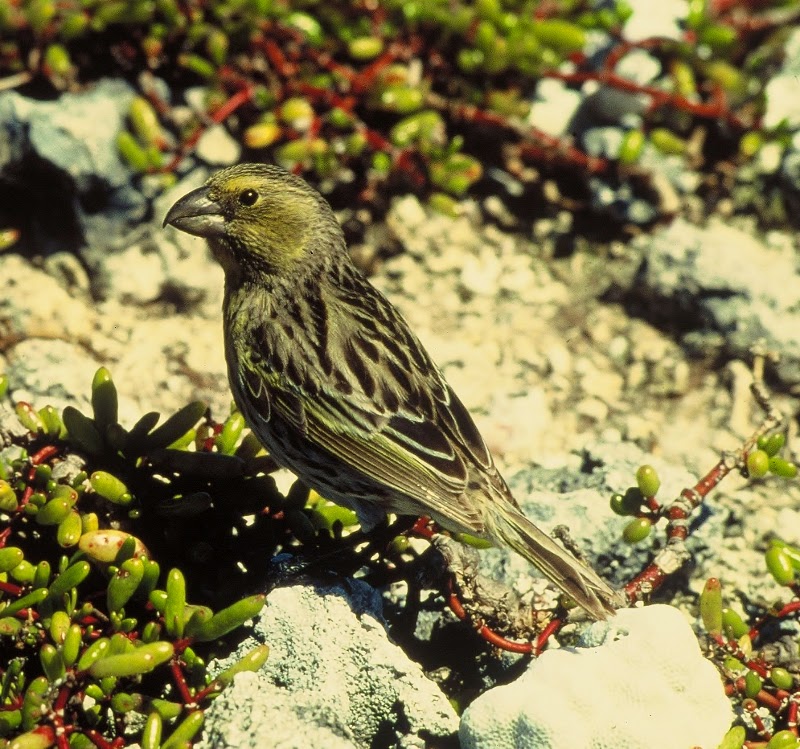 |
| (Photo from US Fish and Wildlife Service) |
Common name:
Laysan finch (en); palila-de-Laysan(pt); psittirostre de Laysan (fr); palila de Laysan (es); Laysankleidervogel (de)
Taxonomy:
Order Passeriformes
Family Drepanidae
Range:
This species is endemic to the island of Laysan in the north-western Hawaiian archipelago.
Size:
These birds are 19 cm long and weigh 32-34,5 g.
Habitat:
The Laysan finch is found in dry scrublands and grasslands, using low scrubs, bunch grasses and forbs, particularly the beach naupaka Scaevola taccada.
Diet:
They feed mainly on fruits and seeds, also taking carrion, invertebrates and bird eggs.
Breeding:
Laysan finches breed in March-June. They are monogamous and nest in a cup placed among the vegetation. There the female lays 3 eggs, which she incubates for 16 days while the male brings her food. The chicks are fed by both parents and fledge 3 weeks after hatching, but only become fully independent about 3 weeks later.
Conservation:
IUCN status – VU (Vulnerable)
This species has an extremely small breeding range and the global population is estimated at 1.500-7.000 individuals. The population is believed to fluctuate considerably. The successful invasion of golden crown beard Verbesina encelioides, which provides nesting habitat and food for Laysan finches, caused a dramatic increase, but the plant was considered to have negative impacts on seabirds and so the population of Laysan finches crashed after the first efforts to control Verbesina, but the abundance of Verbesina has since increased. At present the main threats to this species are storms and droughts, which can cause almost total nest failure, while global warming could have an impact on the long-term as sea level rise will reduce the area of Laysan located above sea level and may increase the frequency and severity of hurricanes and droughts.







